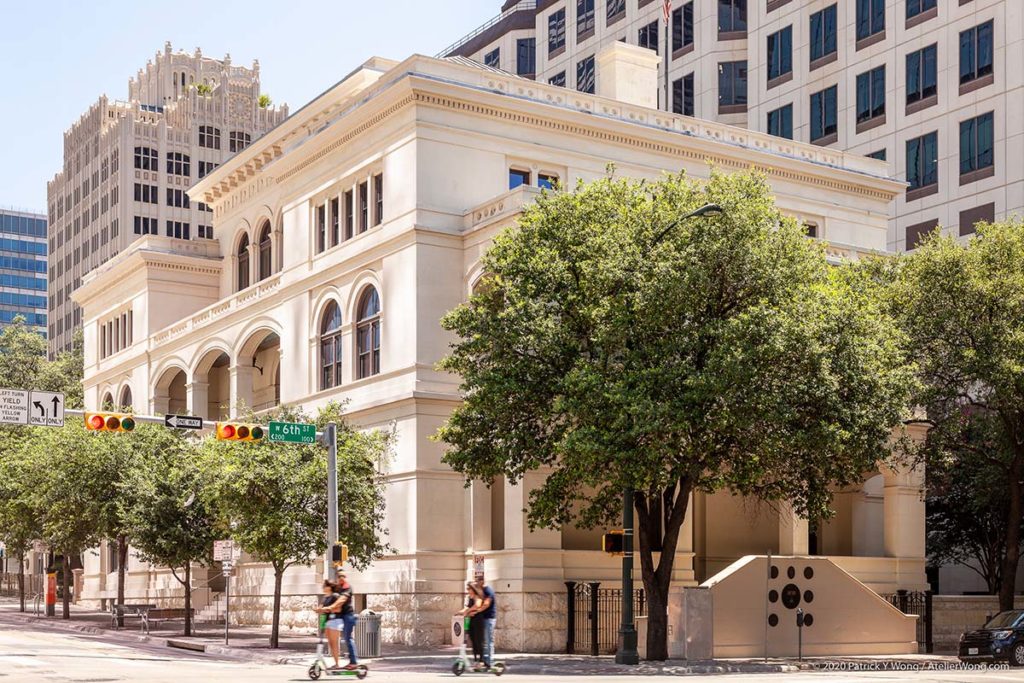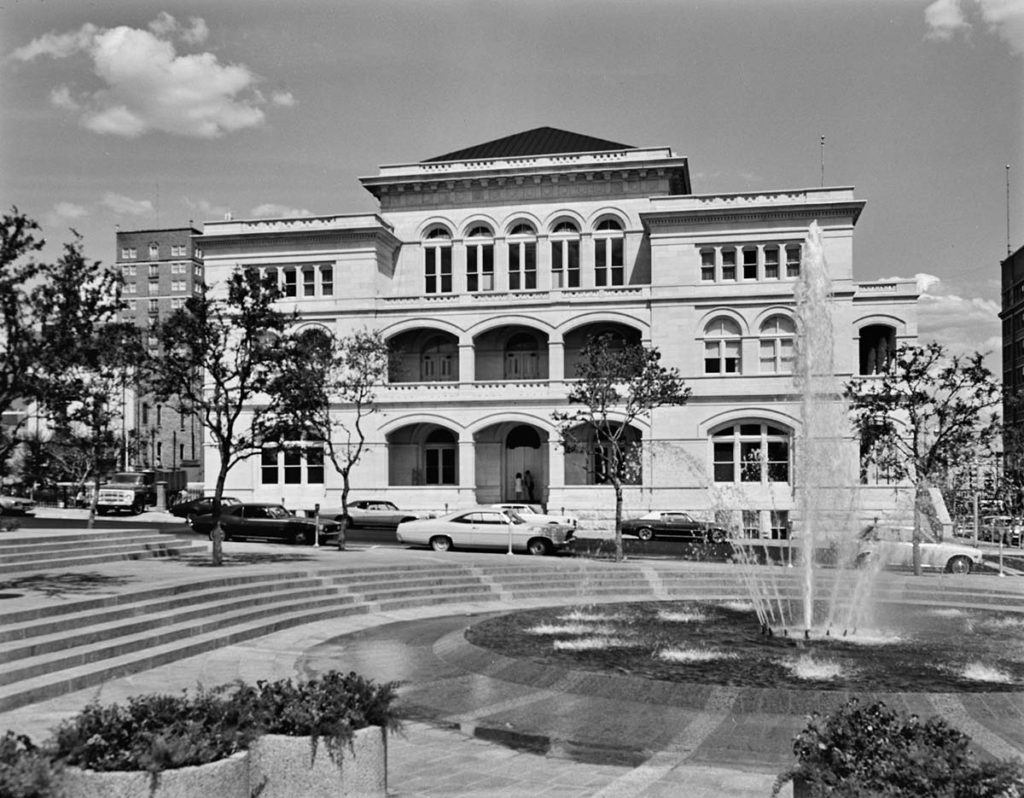O. Henry Hall illustrates the role of architectural styles in representing public institutions. In the 18th and 19th centuries, the United States was still in its infancy, and the nascent federal government was focused on establishing its legitimacy on both the national and international stage. Lacking a distinct architectural heritage of their own, American architects looked to the history and traditions of Western Europe for inspiration.
Originally built to serve as a post office and federal courthouse, this limestone-clad structure emphasizes symmetry and formality in order to impart a sense of order and stability. The design is modeled after the Villa Borghese in Rome, which has a similar arrangement of flat-roofed pavilions connected by open-air galleries beneath a raised and recessed central attic. In this case, the height of the pavilions at either end is accentuated by gradually reducing the size of the windows as the building rises (a trick that is also used on Main Street at Disneyland). At the same time, the use of segmented (as opposed to half-round) arches in the galleries, lower level windows, and 6th Street arcade emphasizes the building’s horizontality.
The limestone façade is notable for its pure lines and restrained ornamentation, which was appropriate for Austin as a burgeoning city in the late 19th century. The interiors are more elaborate, incorporating woodwork fashioned from old-growth cypress, Corinthian columns, and plaster decoration. Unfortunately the vaulted ceilings of the original courtroom—bedecked with ornate plaster designs—were covered up in the 1970s to create mechanical space for the addition of air conditioning. On the bright side, the building’s 2018 restoration removed a number of dropped ceilings in other spaces.
In 1971, the building was christened O. Henry Hall after the famous American author William Sydney Porter (later known as O. Henry), who was actually convicted of embezzlement in this very building. After serving three years in prison, O. Henry high-tailed it out of Austin, where today he is better known for the annual Pun-Off World Championships that bears his name. Think of it as a pun for the ages. – Bud Franck





